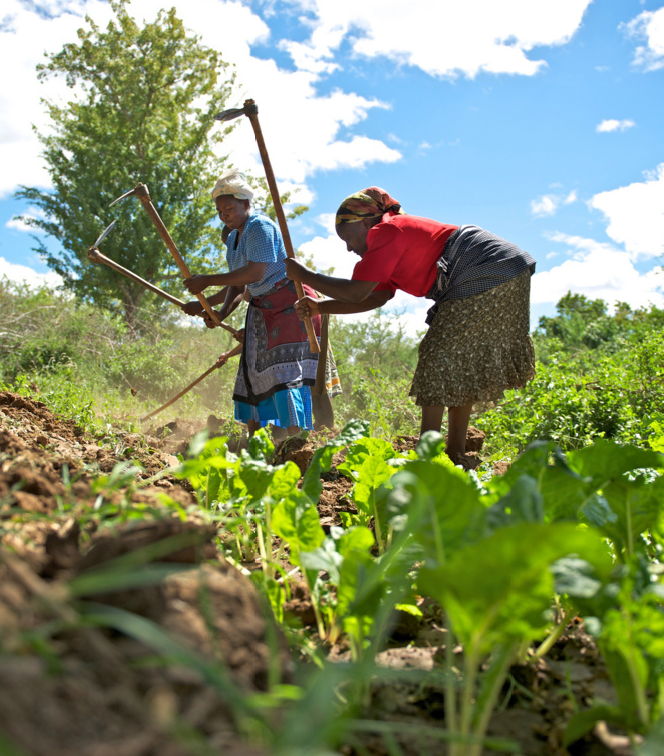According to the United Nations, by 2050, two-thirds of all humanity, that is close to 6.5 billion people, will be living in urban set ups. Cities in developing countries including Zimbabwe are recording high levels of rural to urban migration as people look for employment, better educational opportunities and being attracted by the bright lights of the city. This has created an immediate need for using urban natural resources at hand for survival.
Urban agriculture also referred to as guerrilla farming, is defined as food production within the confines of cities and towns, at the backyard, on rooftops, on the rural urban interface, on unused spaces and in greenhouses. Advocates have argued that, policy-makers should recognize the opportunities provided by urban agriculture as we counter increasing urbanization and food demand. There is some benefit as it earns income to families, employment of low-skilled unemployed residents, improved air quality and hydrology, provides a place for disposal of organic solid waste (manure) and reduction of urban blight. World over farming in plots near cities and within individual properties are recognised and supported with the potential to sustainably and significantly contribute to food security. A resident in Harare had to say, “My yard sprouts with, tomatoes, vegetables, garlic and onions. I see benefit; We always meet with my neighbours at the garden fence and exchange for money. My street and backyard have grass, trees, lawn and flowers. I always see beauty”.
While we cherish the benefits of urban agriculture, the fact remains “if things are done wrong then things will go wrong” and this brings attention to the commonly practiced form of urban agriculture – Illegal Urban farming – . with impacts ranging from environmental, social, health to infrastructural risks. This is a critical subject that requires increased attention and response, raising concern over Sustainable Development Goal (SDG) 11 on Sustainable cities and communities. The SDG endeavours to make cities inclusive, safe, resilient and sustainable. Sustainable development cannot be achieved without significantly transforming the way we build and manage our urban spaces. When we utilise every ‘available’ piece of land without much regard to anything else. Any ‘unused’ piece of land is a target, be it on hill slopes, on wetlands, along urban stream banks, near dumpsites, near electricity, water and sewer infrastructure and along road sides. These are likely to cause significant long term damage to the urban ecological and economic systems. While providing food security in the short term, can consequently hinder the ability of urban residents to secure food as it is likely to become the leading cause of distress in relation to SDG 11 thereby putting Zimbabwe in stark contrast to national, regional, and international commitments towards attaining sustainability.
Citizens should be aware of the impacts of their actions and other risks as secondary to meeting their food requirements. Use of fire as we clear land poses a great risk on the environment, as an agent of pollution and fragmentation of urban species habitats. Tilling itself particularly on hill slopes and road sides triggers soil erosion resulting in gullies, one of the most prominent characteristics of degraded land and an eyesore. Land clearing also interferes with green spaces and threatens biodiversity by replacing natural environments causing disturbance and draining of wetlands and vleis which impede their ability to carry out their ecological services that include renewing ground water supply, water filtration of excessive nutrients among others. The use of chemicals for pest control, use of inorganic fertilisers worsens the situation as these chemicals end up contaminating water sources and endangering aquatic life. Proximity of fields to potentially precarious land uses such as industries which produce pollutants in solid, liquid or gaseous state result in absorption of heavy metals that endanger pregnant women, the elderly and children. Crops can also be hazardous to public safety by harbouring criminals as they create crime generation from hideouts; muggings and robberies are known to be on the rise during the cropping season as people plant crops along footpaths used by residents to go to the bus ranks, shops, clinics and adjacent suburbs. Tilling under electricity poles can weaken the pole or accidental exposure to naked wires. High health risks on drinking-water contamination through potential groundwater contamination. Flooding, damage to property, transport routes and infrastructure; lowering of the land surface; logging of city drains, algal blooms and water hyacinth, high costs of water purification, loss of scenery and diversity of the environment, loss of recreational spaces; water for domestic use being diverted to irrigation causing shortages municipal supply.
